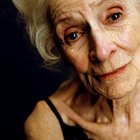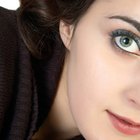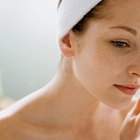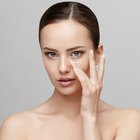
hammett79/iStock/Getty Images
Fraxel laser treatment is a method used to resurface the skin. It is used for the treatment of wrinkles, hyerpigmentation, scars, and sun-damaged skin. According to a 2007 research paper published in the "Annals of Plastic Surgery," Fraxel laser works by inflicting subtle damage on the skin which triggers the skin's natural healing process and the production of new skin. The lead author of the research states that Fraxel is effective in improving skin tone, color and texture and also helps to diminish fine wrinkles and melanocytic pigmentation. Fraxel laser therapy may carry some risks, although a 2008 article by lead author Dr. E.M Graber and associates in "Dermatologic Surgery" noted that side effects caused by Fraxel treatment are temporary.
Acne-Like Eruptions
Graber's 2008 research into the dangers of Fraxel laser treatment found that one of the most frequent complications of Fraxel treatmemt was acne-like eruptions. He noted that this affected 1.87 percent of patients studied in his research. Although the author noted that the duration of Fraxel side effects were short-lived, acne is an unpleasant condition that may be inflammatory or noninflammatory in nature and often requires treatment. While acne can cause scarring of the skin, Dr. Graber noted that the acne eruptions resulting from Fraxel treatment did not lead to scarring.
Cold Sore Outbreaks
Herpes simplex virus outbreaks have been found to affect 1.77 percent of patients who have undergone Fraxel laser treatment, according to Dr. Graber's study. The Herpes simplex virus is responsible for cold sores. Although cold sores do not present a serious health issue, they are often uncomfortable and can make a person suffering from them feel self-conscious. However, cold sores usually only last for 10 to 14 days and usually respond to treatment with over-the-counter treatments.
Additional Side Effects
Other minor side effects that may occur following Fraxel treatment include excessive scaling and peeling of the skin. Crusting of the skin may also occur. Patients may experience swelling for up to one week following treatment; however, this can usually be alleviated by applying an ice pack to the affected area. Some patients may also experience post-inflammatory pigmentation of the skin. This is more common in patients with a history of melasma and patients with darker skin tones. according to DermNet NZ, a website published by the New Zealand Dermatological Society.
Related Articles

Bromelain & Bruising

Long-Term Health Risks of Laser Hair ...

Fraxel Repair Vs. Restore Results

Chasteberry for Acne

Side Effects From Skin Tightening

What Are the Dangers of Photofacials?

What Are the Dangers of Fraxel Repair?

What Are the Benefits of Extrapone ...

The Difference Between Retin A & Renova

What Is the Downtime for a Photofacial?

Side Effects of Cosmelan

How to Get Rid of Aftershave Allergies

What Is Aloe Good For?

Mesotherapy & Weight Loss Results

List of Retinoids

Black Pepper Oil for Vitiligo

What Prescriptions Can Get Rid of Under ...

Herbs For Melasma

Hydroquinone & Dark Circles

How to Clean Tattoos With Rubbing ...
References
Writer Bio
Based in London, Charlotte Waterworth has been writing about health since 2000. Her work has appeared in trade magazines, including "Independent Community Pharmacist," "Pharmafocus," "Current Drug Discovery" and "Hospital Healthcare Europe." She is a member of the European Medical Writers Association. She holds an honors Bachelor of Science in biochemistry and a doctoral degree in gene therapy, both from Cardiff University.
Photo Credits
hammett79/iStock/Getty Images